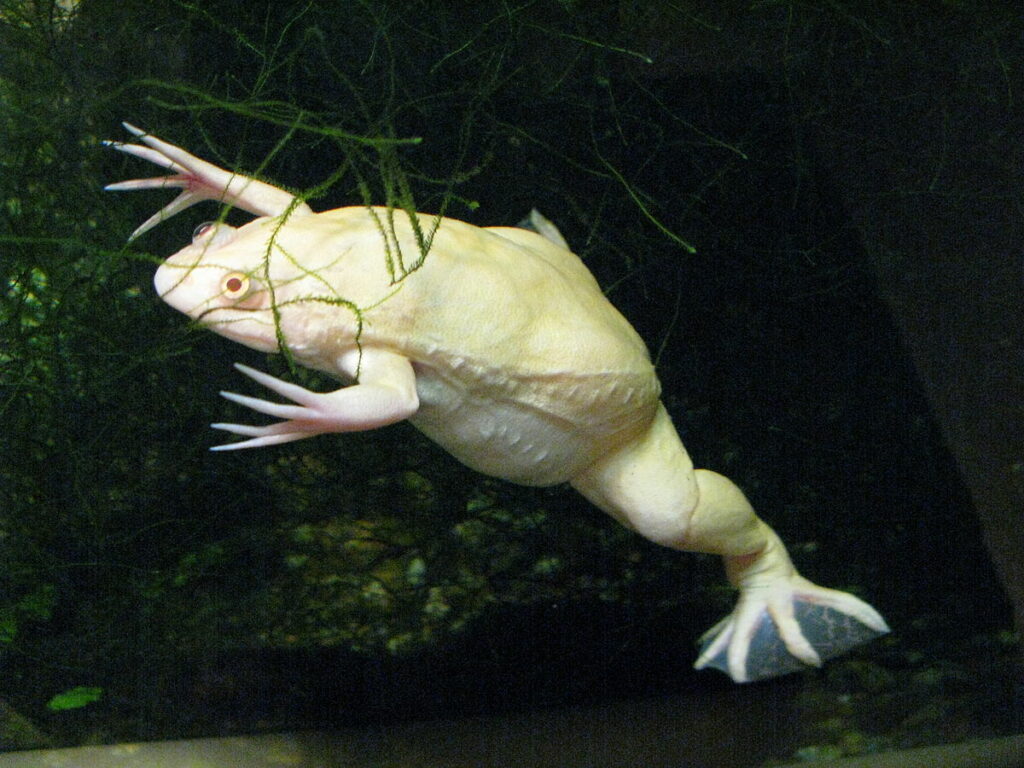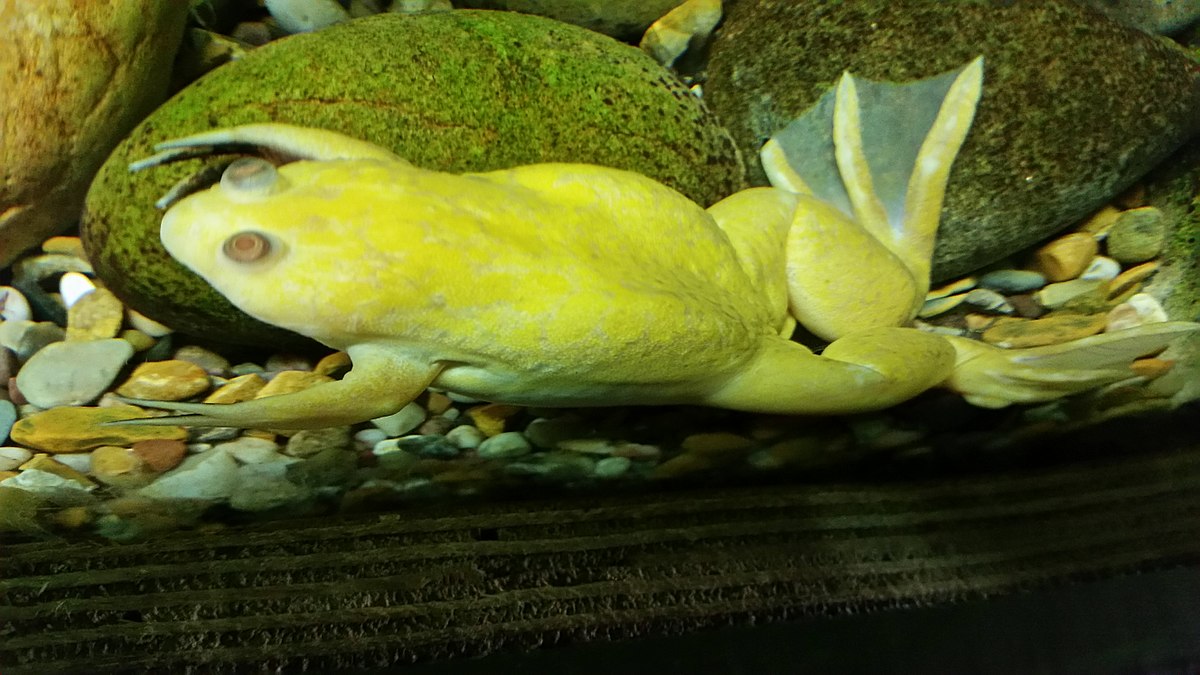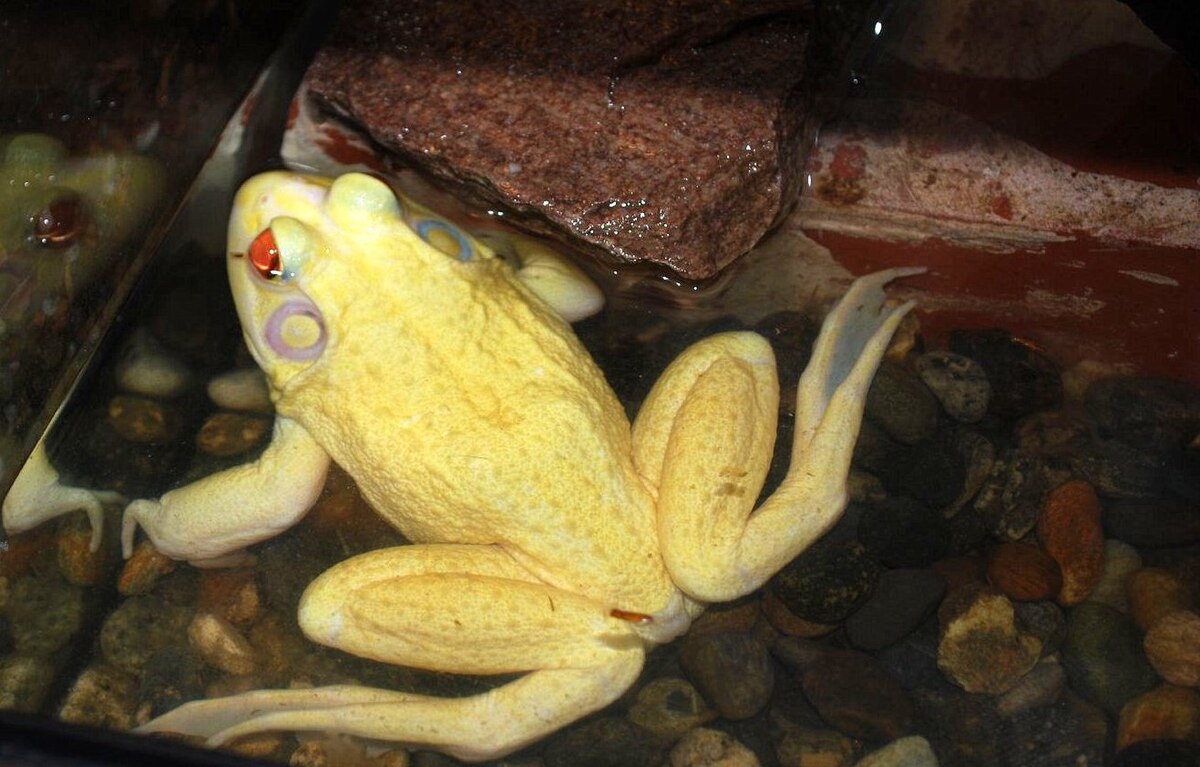Welcome to a world of captivating creatures, the Albino Frogs. These unique beauties are full of surprises. What’s the catch? Well, it’s their lack of pigmentation. That’s the fundamental thing that sets them apart. Now let’s set out on an adventurous exploration into their fascinating existence.
Understanding the Preferred Habitat of Albino Frogs

Mostly found in the wild, Albino Frogs are a unique variation of the African Clawed Frog. Now you might be wondering, why do these captivating creatures choose this African region as their home? One reason is the accommodating nature of the aquatic environment in which they thrive. Their preference leans towards shallow, wide aquariums where they have ample space to hop around. Still, consider an aquarium depth of not more than ten inches so they can breathe easily. After all, they aren’t exactly fish to breathe underwater, right?
The Importance of Tank Positioning
Got a sunny spot for your pet Albino Frog’s tank? Hold that thought. Keeping their light-sensitive skin in mind, your amphibian buddy will fare better away from direct sunlight. Their precious skin requires thoughtful placement of their tank – somewhere between extremes where the Sun’s rays cannot reach them!
Considerate Water Conditions
The water temperature is crucial for these frogs. Remember this, a range between 40-90 degrees Fahrenheit is their comfort zone. Should the temperature in your home waver significantly, an aquarium heater could be a wise investment for your Frog’s aquarium. As your Albino buddies will need to refresh, be sure to change about 25% of the tank’s water every four weeks.
Feeding Rituals for Albino Frogs

When it comes to satisfying their taste buds, Albino frogs aren’t very picky. A diet of pellet-type food, bloodworms and/or tubiflex worms are all edible options. But remember this, your Albino friends might develop a condition known as bloat or dropsy if the bloodworms carry certain bacteria. Also, be mindful of feeding them fish flakes as a primary diet. They aren’t designed like fish to fetch nutrients from it.
Tips for Designing the Perfect Habitat

Mimic their natural habitat to keep your Albino Frogs engaged during their active night hours. Here are some tips:
- Keep the tank floor free of small gravel- they might find it ‘tasty’!
- Include plenty of stable shelter so they can hide.
- How about a cave-like decoration? It’s like home to them!
Now that you have discovered the unique world of Albino Frogs, isn’t it like setting foot in an enchanting landscape full of fascinating creatures? Their one-of-a-kind appearance and peculiar habits definitely make them a center of attraction! If you’re considering them as pets, keeping these points in mind will contribute to a healthy environment for these unique beauties.
Useful Links
For further exploration, check out these helpful pages: